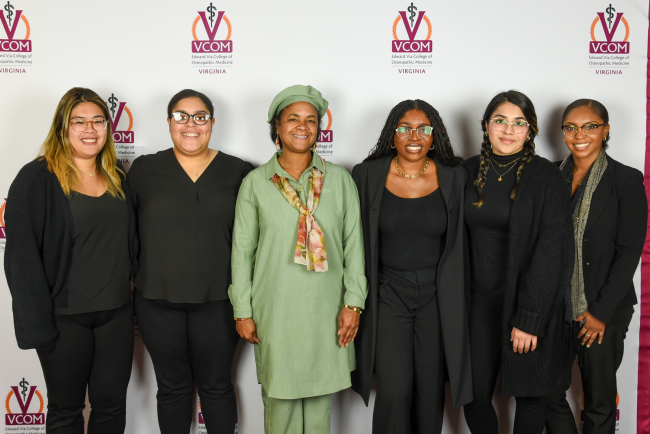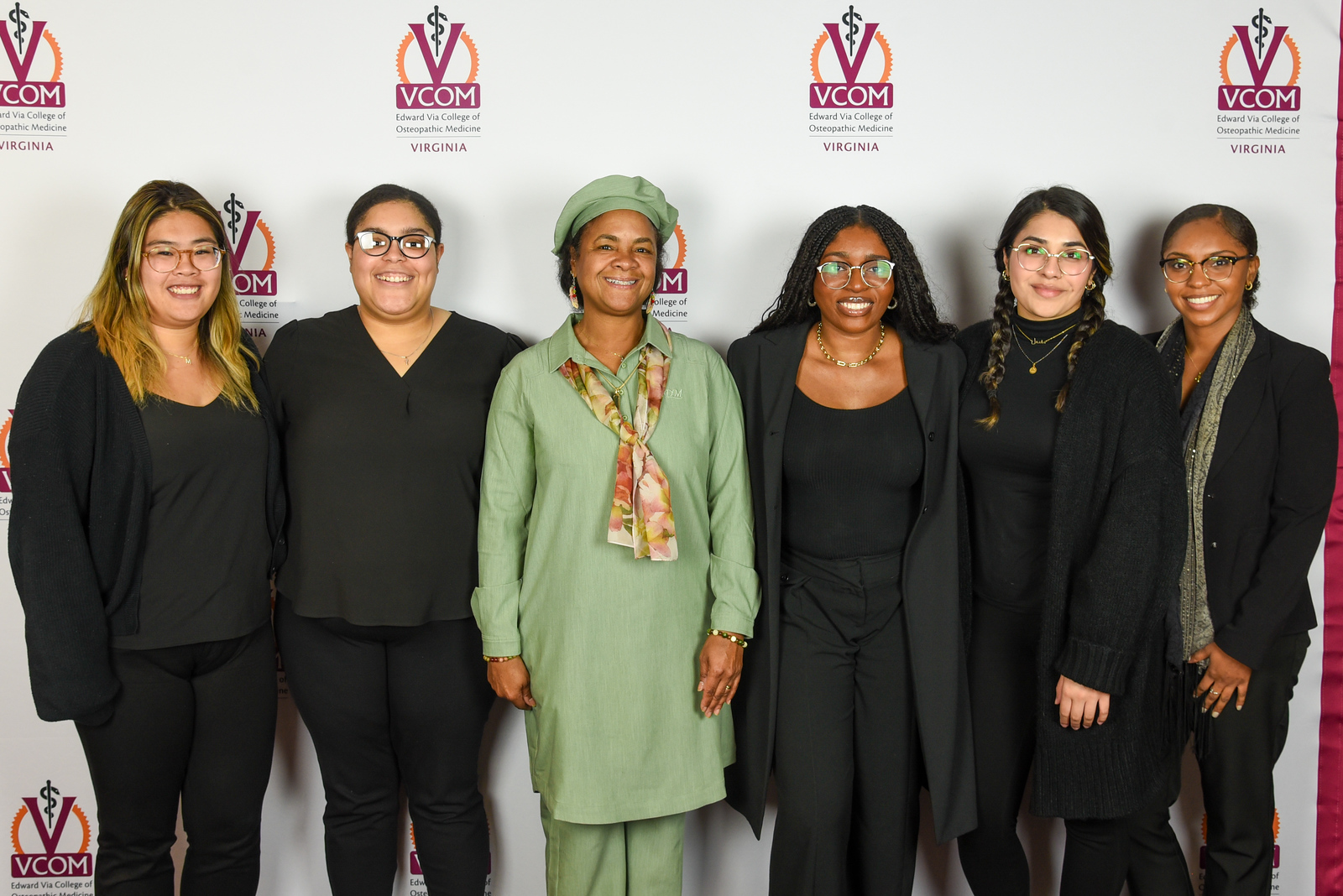
William G. Anderson is an icon in the osteopathic profession. He was the first Black president of the American Osteopathic Association (AOA), a member of the AOA Board of Trustees and a member of VCOM’s founding Board of Directors. He is also an icon of the Civil Rights Movement. He worked with Martin Luther King, Jr., and was the personal physician to Rosa Parks. He and his wife wrote a book about their experiences fighting for civil rights in Albany, Georgia, the proceeds of which go back to the American Osteopathic Foundation to provide scholarships for Black students who want to pursue education in osteopathic medicine.
The AOA notes that, “At one time, Dr. Anderson was the only Black DO in the entire state of Georgia.” In 2009, Dr. Anderson was honored with the American Osteopathic Foundation’s (AOF) Lifetime Achievement Award. His commitment to osteopathy and civil rights, as well as to VCOM, is the reason why the College named their Black History Month speaker series after him: the William G Anderson DO Speaker Series. Given his dedication to the profession, it is perhaps unsurprising that Dr. Anderson’s daughter became an osteopathic physician herself, and VCOM was honored to welcome Darnita Anderson Hill, DO, to campus on Feb. 6 to be the 2024 featured speaker of the series.
Dr. Hill is understandably proud of both of her parents, and she says she was fortunate to have access to a small neighborhood clinic where she was born—a clinic that was all the more important because African Americans weren’t welcome in the local hospital. The doctor at the clinic was a DO, just the 4th black DO in the country, and that doctor inspired her father to attend osteopathic school. “It was practically predestined for me to attend an osteopathic medical school,” she laughed.
Her talk to the VCOM community was primarily about the book she published in 2017, after 10 years of research: Blacks in Osteopathic Medicine: An Idea Whose Time Has Come.
The point of the book, she said, is to preserve history and the stories of struggle and pain. This history is inspiring because everyone has their own struggles—personal, societal or collective struggles. “When we draw on others’ experiences, it makes us stronger,” she said. “These are topics that a lot of people don’t want to talk about because it makes them uncomfortable. We live in a time. . .where you have so many ideas and types of individuals that we are forced to address, and we should be forced to address, because then we become more sensitive to the needs and concerns of others.”
Although DOs and MDs are now recognized similarly—they have the same number of years of training, they can take the same board exams, they go into all of the same specialties—that was not always the case.
The profession struggled to become known and accepted. The founder of osteopathic medicine, A.T. Still, was considered by many to be a quack. In 1960, there were just six qualified colleges of osteopathic medicine. In 1961, the Pacific College of Osteopathy defected because they didn’t want to be associated with osteopathy anymore. Osteopathic physicians were not welcome in hospitals to treat those with polio, despite there being some evidence that osteopathic manipulative medicine aided in treatment. Graduates from the aforementioned Pacific College of Osteopathy sold their DO degrees for $65. In 1961, the American Medical Association stated that there could not be two distinct sciences of medicine. “That is similar in ways to the struggle in Black history,” Dr. Hill said. “I was really astounded by some of the parallels. They said the same thing about Blacks in America. You’re not equal.”
The first two Black DOs were women: Meta Christy and Edna Kennedy, who graduated in 1921 and 1927, respectively. The first Black man to earn a DO degree was Dr. Weymouth Leopold Swainson, who graduated in 1947. Between 1947 and 1957, nearly a dozen pioneering Black men entered the osteopathic profession. In the 1960s, more than 100 Black osteopathic physicians took their place in the profession.
African Americans often have difficulty trusting the traditional medical system because of experiments like the Tuskegee Syphilis Study and the Relf case in 1973, which revealed that more than 100,000 mostly Black, Latina and indigenous women were sterilized against their will. “I love osteopathic medicine—I love the profession—because it does not have a record of atrocities like this,” Dr. Hill said. The history of medicine, she went on, shows the value of having a physician who looks like you.
Her presentation to the community ended with this thought: “May you be encouraged to celebrate your own diverse and unique lives and ideas . . . so long as it is not self-serving, but as a gift and reminder that your part contributes to the benefit of the whole.”
Many thanks to Dr. Hill for coming to visit our VCOM-Virginia family and to the VCOM-Virginia chapter of the Student National Medical Association (SNMA), who organizes the College’s Black History Month events.
